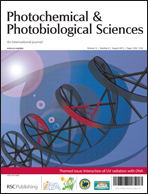The behavior of monomers and dimers of methylated xanthine derivatives in their excited states is investigated by means of the ADC(2), CASSCF, and CASPT2 methods. The results of the calculations of stationary points in the ground and excited states, minima on the S0/S1 crossing seams and the relaxation pathways are used to provide the interpretation of experimental observations of the monomer xanthine derivatives. The effect of dimerization on the excited state properties is studied for various relative orientations of the monomers in the dimer complexes in comparison with the relevant monomer species. A significant stabilization in the excited state minima of dimers is observed. These can act as trapping sites. Various types of conical intersections, with both localized and delocalized characters of wavefunctions, have been found, mainly energetically above the lowest bright excited state in the FC region. In addition, structures with the bonds formed between the two monomers were also found on the crossing seams. The possibility of ultrafast relaxation via these conical intersections is discussed.

You have access to this article
 Please wait while we load your content...
Something went wrong. Try again?
Please wait while we load your content...
Something went wrong. Try again?


 Please wait while we load your content...
Please wait while we load your content...